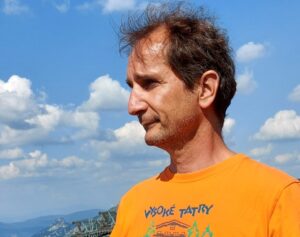
Container wastewater treatment plants for 60 – 600 PE are an integral part of our production program. We started with a WWTP using growth biomass, but after conducting our own research in cooperation with Faculty of Chemical and Food Technology (STU) in Bratislava, we developed our own AS-ANAcomb technology. We have been improving this technology since 2000, when it first reached customers. Despite 20 years of experience, it retains its advantages and in many applications its use is the optimal solution.
The technology is based on anaerobic pre-treatment and subsequent aerobic treatment using a biomass carrier. Such an arrangement allows the WWTP to survive for a longer time without food (waste water), which is its advantage in wastewater treatment in hotels, but also in industrial plants for municipal wastewater where there is no continuous operation and on weekends the supply of waste water is minimal.
Although the AS-GranBio granular biomass technology was developed mainly for municipal and industrial WWTPs, it has also been used for smaller applications from 60 to 800 PE. The WWTP is designed and supplied for development projects, housing units, satellite towns, etc. For these sizes, we supply WWTPs in a container design.
AS-ANAcomb is a technology that has anaerobic pre-treatment, thanks to which it has lower electricity consumption than standard technologies. The new AS-GranBio® technology does not require a settling tank, denitrifying stirrers, recirculation pumps and operates in simultaneous denitrification mode, so electricity consumption is the lowest of all other technologies used in municipal wastewater treatment. In addition, both AS-GranBio® technology and AS-ANAcomb
technology operate with a high sludge age and therefore the production of excess sludge is lower compared to other technologies, which is reflected in lower operating costs for the treatment of excess sludge.
Both AS-ANAcomb and AS-GranBio container WWTPS are with the design and installed technology in accordance with the idea of sustainable development. That is why electricity consumption is lower for both technologies than for standard technologies and, in addition, biomass production is lower. The working volumes of both technologies compared to standard technologies are smaller and the AS-GranBio technology removes the total P even without the use of chemical precipitants.
We have prepared documents for designers for the design of our container WWTPs. We will advise on the design of the optimal type of WWTP and we will also calculate the optimal size of the WWTP according to the source of wastewater. Then we provide a drawing in dwg. format and project in word.
Our employees will prepare a custom-made solution for your company. Technological designs of container WWTPs are made not only with regard to the requirements for the quality of treated water, but also with regard to the reliability of the WWTP operation and investment and operating costs.
After more than 20 years of experience and a number of implementations, we can design and deliver such technological solutions that have high reliability and long operating life. That´s why we prefer quality to quantity, which our customers value.
During the operation of our WWTP, we will provide you with advice and technical assistance, which many of our clients like to use in the first years. In addition, we offer you consulting services in the operation of WWTPs, even if we have not designed or implemented it. Do you need advice on your WWTP or WWTP design? Contact us.


Sales and technical representative for municipal WWTPs 100 – 10 000 PE, industrial WWTPs, air purification, sludge dewatering, pilot plant and laboratory models of WWTPs.